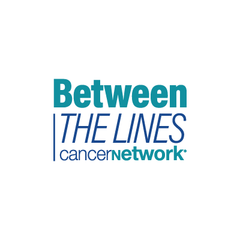
Apalutamide in Patients With mCSPC: Safety
GU oncologists discuss toxicities from androgen deprivation therapy and apalutamide as reported in the phase 3 TITAN study.
Episodes in this series

Simon Chowdhury, MD: One thing about this slide is that we underestimate the toxicity of ADT [androgen deprivation therapy]. A lot of people have talked about skin rash and things like that. There’s a bit more skin rash with apalutamide, but as we were talking about, rashes don’t kill patients, cancer does. Sometimes we get the Hippocratic oath of “Do no harm” wrong. We clearly don’t want to do harm, but if we underestimate the lethality, morbidity, and mortality of the cancer, both physical and psychological, we do our patients a great disservice.
When we get into the conclusions, I want Neeraj to talk about some of the work he’s done in the real world looking at patients’ lines of therapy, because that work is some of the most important work that’s come out in prostate cancer in the last 5 years. That should be something that we’re all looking at and thinking, “OK, we did a New England Journal of Medicine paper, we did a JCO [Journal of Clinical Oncology] paper, but what’s actually going on in the clinics?” We’re not benefiting enough patients, and we need to work hard to change that. Hopefully things like this teaching session will make people feel more comfortable.
For me, this isn’t a subtle difference. As Neeraj said, this is very clinically meaningful. This is giving patients extra years of quality life. That’s big. But looking at the adverse effects, rash comes out to a degree, but some of that is these studies were very early in the drug’s development, so it’s very different from some of the other drugs here. If you warn the patient, warn yourself, and know what the concomitant medications are, sometimes you might stop early or need a dose reduction, but I haven’t seen rash being a big problem. We also have to remember that the total exposure is going to be longer in the apalutamide-ADT arm because patients do better. There’s a bias within that. Neeraj has done a lot of meaningful work here, but ADT is what we need to focus on because it’s a very toxic treatment. I don’t know what you think, Neeraj.
Neeraj Agarwal, MD: Those are very good points you raised, Simon. As you said, the patients in the apalutamide arm were on treatment for more than twice as long compared with patients who were in the placebo arm. These aren’t time adjusted values. Given that background, if you look at cardiovascular disorders, grade 3/4 were 0.8% in the apalutamide arm and 0.3% in the ADT arm. I feel very reassured. Skin rash was 2.9% in apalutamide arm and 0.6% on the placebo arm. I’d like to remind ourselves and our listeners that these skin rashes were based on redness of the skin and not the emergence of papules or any of those things that we see dreadful pictures of in dermatology textbooks. It’s redness of the skin.
We all know that once it happens, we take a break from apalutamide for 7 days, it disappears, and 90% of these patients never have rash come back in my experience. Although we talk about the rash, in reality, I worry more about fatigue or falls. The rash is slight redness on the skin, which disappears after taking a break from the drug for 2 or 3 days. I’d rather worry about fractures, falls, fatigue, heart disease, and seizures. We see that these are presenting in a very small number of patients, about 0.7% or 0.8% if you look at grade 3 of these adverse effects. That’s what I’d take from this slide.
Transcript edited for clarity.
Newsletter
Stay up to date on recent advances in the multidisciplinary approach to cancer.














































































